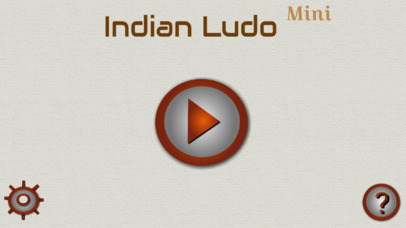
Indian Ludo (Ashta Chamma, ISTO, Chauka Bara, Thaayam, Pachisi) is one of the oldest board games extant, still being played in certain parts of India. It is primarily a game of chance, but involves thinking and planning. This is played with a dice and with different size grids with minimum of 2 and maximum of 4 players.
This game is called by various names in different languages in different regions of India.
• Ashta Chamma in Telugu - Andhra Pradesh/Telanganaa
• Daayam / Thaayam in Tamil - Tamil Nadu
• Chauka Bara / Katte Mane / Gatta Mane / Chakaara / Chakka in Kannada - Karnataka
• Pakidakali / Kavidi Kali in Malayalam - Kerala
• Kaana Duaa / Chung / Challas / Chalas / Baara Atte in Hindi - Madhya Pradesh and Rajasthan
• Champool / Kach kangri / Baji / ISTO / Asthachanga in Marathi- Maharashtra and Ahmedabad.
Game features:
• 3D game play with 3D dice and pawns
• Rotatable board
• Rich graphics
• Human vs Human or Human vs robot mode.
• Start/Stop background music and game sounds independently.
• Pause/play or restart the game options are included.
• Easy navigation between the screens.
Objective:
For a player to win he/she must move all their pawns to the center square.
Game rules:
Pawns of two different players cannot exist in the same square, other than a "Safe" square, which are marked on the board. So if the pawn of player 1 lands on the same square of a pawn of player 2, then player 1 has "hit" player 2. Player 2s pawn is out of the board and this pawn needs to start over. It will be released to its home square only after a 4, 5 or 6 is thrown.
For a players pawn to progress into the inner squares, he/she should have "hit" at least one of his opponents pawns. This condition is imposed on the player and not on the pawn.
For example, even if one of the players pawns has hit one of the opponents, then all his/her other pawns will be eligible to enter the inner square. When a pawn reaches the square left of its home square, it further moves up into the inner squares only when the player got a "hit" and now moves in clockwise direction. If the player has not "hit" any of his opponents, then the pawns cannot be moved until the player got a "hit".
A pawn needs to reach the central square exactly. For example, if a pawn is 3 squares away from the center and the player throws a 4, then that pawn cannot be moved.
When the game starts all the pawns are locked and will be released from home square or entered the board only after a 4, 5 or 6 is thrown.
Each pawn requires 2 points to enter the board. If the dice score is 4 then 2 pawns can be released.
Each player takes a turn to roll the dice. Depending on the number rolled, the player can move one of their pawns that many number of squares on the board.
Each player has a fixed path to move pawns, which is in an anti-clockwise direction in the outer and clockwise direction in the inner squares.
Each players pawn must completely traverse the outer squares before moving into the inner squares.



